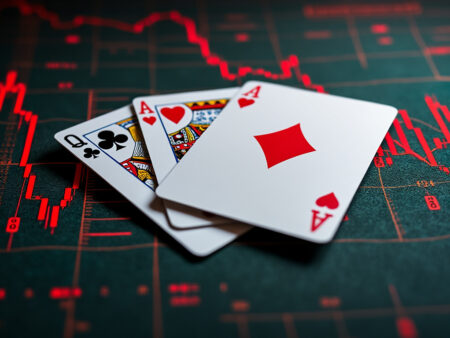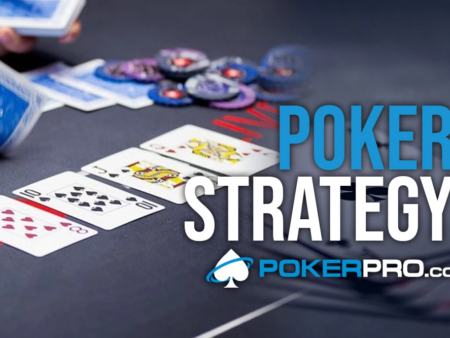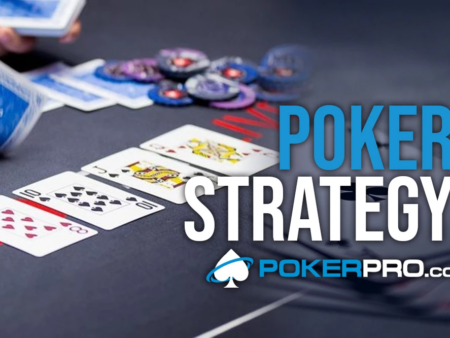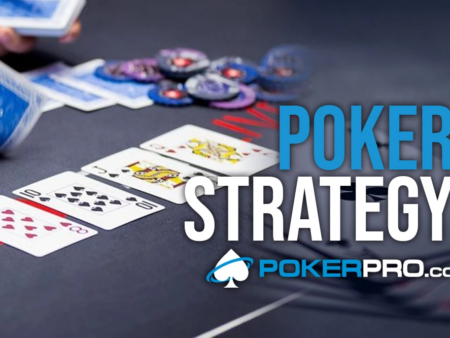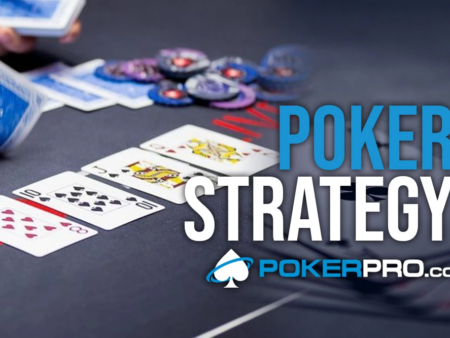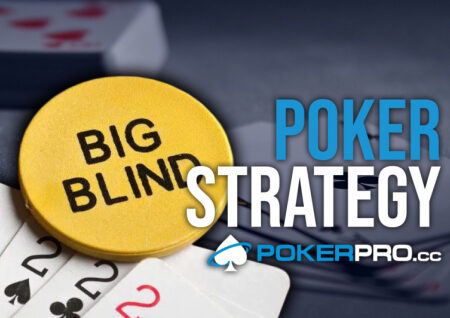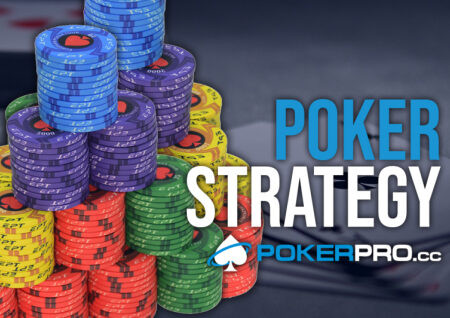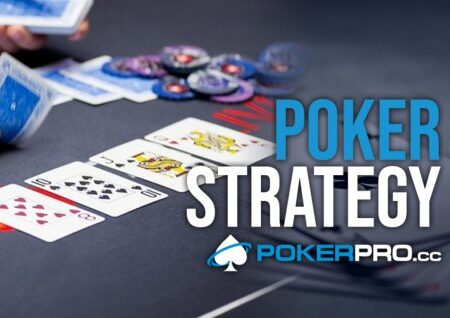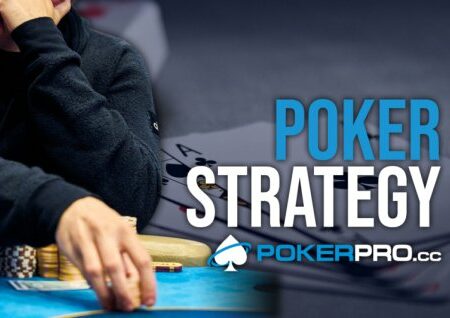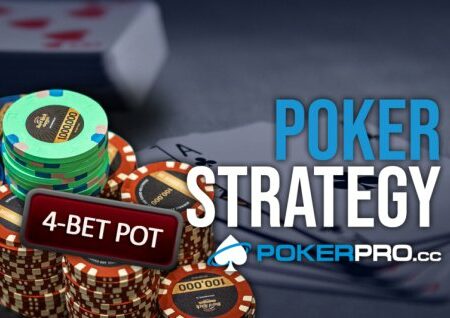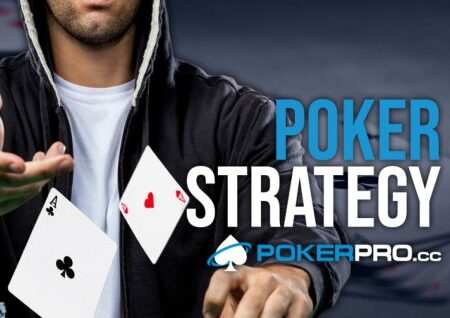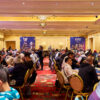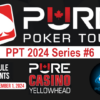Today we are going to examine ultimately scary spot – very coordinated and monotone mid boardTc9c7c. Again with a help from Pio SOLVER.We’re playing N…
Ultimate Scary Spot
Today we are going to examine ultimately scary spot – very coordinated and monotone mid board
Tc9c7c. Again with a help from Pio SOLVER.
We’re playing NL cash, 100 bbs deep BTN versus BB with 5% rake and 3bb cap.
Since hands are raked we open a bit tighter range vs. optimal opponent than unraked. We open 45%
and BB defendes 43% of hands.
We also want to see which sizing is better between 1/3rd and 2/3rds of the pot for what part of our range. Our analysis today is limited to flop.
Flop Tc9c7c
On this flop BB is going to have more flushes than BTN, but we will have more better flushes and overall BTN equity advantage is 51.4% vs 48.6%.
Let’s see what does the solver say on 5,5bb flop.
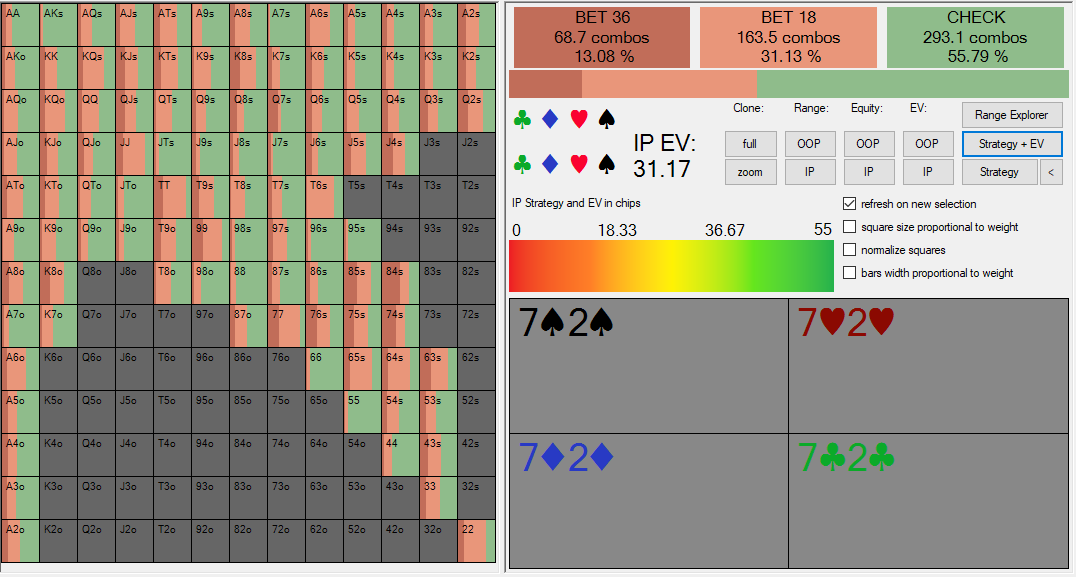
We can immediately see that we like to cbet smaller sizing with better flushes and bigger sizing with smaller flushes that requires protection.
Same goes for our flush draws, the higher the FD more often we cbet 1/3rd. Overall we check 56% of the times, bet 2/3rds 13% and 1.3rd 31%
In checking range we also leave some flushes and it consist higher flushes in a somewhat higher frequency than lower.

As far as value hands that are not flushes such as sets, 2 pairs and straights, we bet sets more often and lower overpairs, and always check straight and AA without club.
With sets we have a lot of straight and flush draws to charge and also two pairand one pair type of hands, lower overpairs need more protection and two pairs are right on the middle according to ev and it’s reflected in frequency almost exactly half bets and checks.
With some flushes, straights and some two pairs we are going to have, IP range which will remain very well balanced, and although it has a lot air hands it will have 49% ev with nice distribution.
As for bluffs and semi bluffs: we have flush draws and smallest underpairs, other hands we check
Let’s see from BB’s perspective
Vs. 1/3rd pot cbet he is raising nut flushes and nut flush draws and half of sets, as well as 3rd pairs no kicker and calling everything else up to 70.5% .
Vs 2/3rd of the pot uses same type of hands, but frequency of raising is much lower as expected (17.5 combos vs 45.6 combos) and folding 44.9%
BB vs 33%
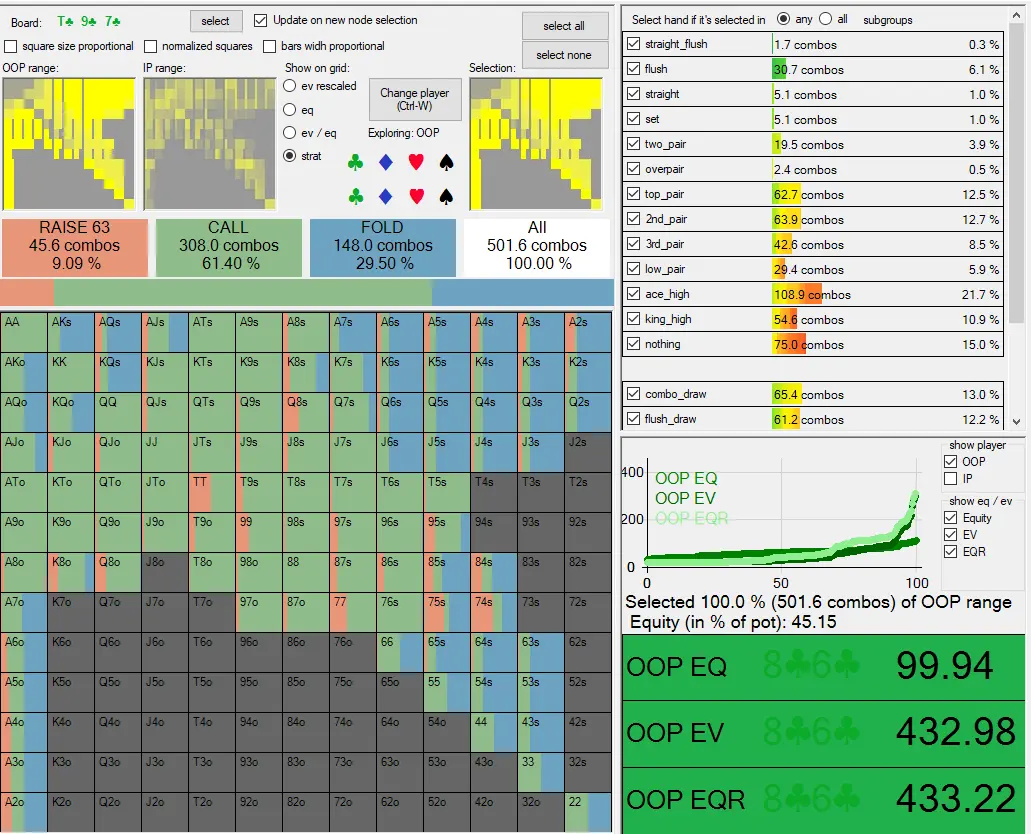
BB vs 66%
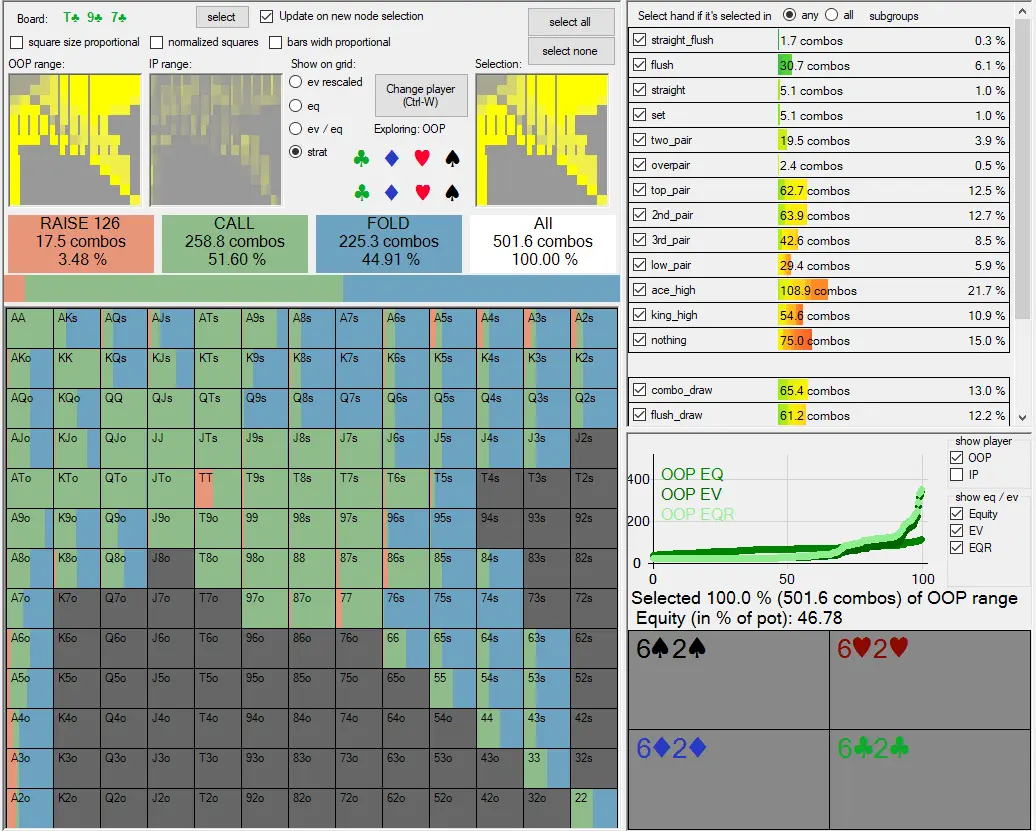
Conclusion
As BTN
Bet for value, don’t slowplay any clear value hands, unless you are against an optimal opponent when you do want to have in small frequency very good hands. That is basically never.
Use smaller sizing for nutted hands, and bigger with those that need protection.
When in doubt is it pure value or needs also protection, ask yourself what would you do if you get raised? If you are still in doubt check with that hand. AA without a club is a good example of such a hand.
As BB
Similar advice, don’t lose value with nut flushes trying to deceive villain and call very good flushes, quite the opposite dominantly raise nut flushes, don’t be afraid to use blockers to bluff raise, aggression is the key in modern poker, also 3rd pairs if you call you would have to fold them on turn, so turn them into bluff, Q8s is also very good to semi bluff raise with.
Why is Q8s better than K8s and A8s, but also better than 84s and 85s?
I would like to hear from you what you think, let’s get the discussion started about this or any other part of today’s analysis.
Also we would like to get some feedback, do you like these PIO analysis and what would you like to see going forward, what spot vs what kind of opponent, MTT SNG or cash, maybe some ICM spot?
Contact us via our usual channels or join Facebook group PokerPro World.
GL at the tables!
